Introduction
Porcelain paving slabs have long been hailed as the gold standard for outdoor elegance and durability. Its reputation precedes it, flaunting a blend of sophistication, resilience, and versatility. But as trends evolve and alternatives emerge, the question arises: are porcelain paving slabs still the unrivalled choice? This blog will analyse the pros and cons of porcelain paving and other potential contenders.
The Allure of Porcelain Paving Slabs
Porcelain paving stands tall with a myriad of advantages. Its sleek, non-porous surface resists stains and absorbs minimal moisture, making it an ideal choice for outdoor spaces. The durability of porcelain ensures resistance against scratches, fading, and harsh weather conditions, promising longevity that outshines many alternatives. Its colour range, textures, and sizes cater to diverse aesthetic preferences, offering a spectrum of design possibilities that elevate any landscape.
Comparing the Contenders
However, the competition isn’t idle. Concrete slabs, natural stone, and composite materials vie for attention in the realm of paving options. While porcelain boasts durability, some argue that its price tag can be a deterrent compared to some of the alternatives.
Brick Paving
Brick paving is renowned for its timeless appeal and rustic charm. While it might lack the ultra-modern aesthetics of porcelain, its classic look and warm hues offer a unique character to outdoor spaces. However, compared to porcelain, brick can be more porous and prone to staining, requiring periodic sealing and maintenance. Its durability is commendable, but it may not match the extreme resilience of porcelain against scratches and fading.
Granite Paving
Granite, with its natural elegance and durability, presents a strong case in the paving arena. Its strength and resistance to extreme weather conditions rival that of porcelain. However, when it comes to aesthetics, while granite boasts stunning natural patterns and textures, it might not offer the diverse range of colours and designs available with porcelain. Additionally, granite’s price can sometimes parallel or exceed that of porcelain, making cost a comparable factor.
Travertine Paving
Known for its unique and captivating appearance, travertine brings a touch of sophistication to outdoor spaces. It has natural tones and textures, which evoke a sense of luxury and warmth. However, compared to porcelain, travertine tends to be more porous and susceptible to staining if not properly sealed and maintained. While its appearance is distinctive, its longevity and resistance to wear and tear might not match the durability of porcelain.
Sandstone Paving
Sandstone is a popular choice due to its natural beauty and versatility. Its earthy tones and varied textures create a warm and inviting atmosphere in outdoor spaces. While sandstone offers a rustic charm similar to natural stone, it may require more maintenance compared to porcelain paving slabs. Its porosity can make it susceptible to staining and weathering, necessitating occasional sealing and care to maintain its appearance.
Limestone Paving
Limestone presents an elegant option with its timeless appeal and muted colour palette. It offers a subtle sophistication to outdoor areas and blends well with various architectural styles. However, similar to other natural stone options, limestone can be porous and vulnerable to staining if not properly sealed and maintained. Its durability is noteworthy but may not match the resilience of porcelain against wear and tear.
Each of these alternatives presents a unique set of characteristics and appeals. However, their susceptibility to staining and weathering compared to the durability and stain resistance of porcelain might sway preferences based on maintenance needs and desired aesthetic characteristics. The choice between these materials often comes down to personal taste, maintenance considerations, and the specific requirements of the outdoor area being paved.
Advantages of Porcelain Paving Slabs
This refined material doesn’t compromise on design, providing a diverse palette of colours, textures, and sizes to infuse outdoor areas with personalised style. Join us on an exploration of the myriad benefits that porcelain paving brings, transforming outdoor landscapes into enduring showcases of beauty and functionality.
Durability
Porcelain paving slabs are highly durable, resistant to scratches, and capable of withstanding heavy foot traffic and weather extremes, making it ideal for outdoor spaces.
Low Maintenance
It requires minimal maintenance, being resistant to stains, mould, and fading. Routine cleaning with mild soap and water is usually sufficient to keep it looking pristine.
Design Versatility
Porcelain offers a wide range of colours, textures, and sizes, allowing for diverse design possibilities to suit various styles and preferences.
Disadvantages and Solutions of Porcelain Paving Slabs
From cost considerations to slipperiness when wet, these drawbacks can influence decision-making. However, equipped with strategic solutions and insights, these hurdles transform into opportunities for informed choices. Let’s delve into the drawbacks of porcelain paving and explore effective solutions that enhance its benefits.
Cost
The initial cost of porcelain paving can be higher compared to some alternatives like concrete or natural stone, potentially deterring budget-conscious homeowners. However, paving selectively in key areas while utilising more cost-effective materials for larger expanses. Choose smaller-sized porcelain tiles or slabs to reduce costs without compromising on style or quality.
Weight
Porcelain paving slabs can be heavier than other materials, making installation more labour-intensive and potentially requiring additional structural support. By employing experienced installers who understand the specific requirements for handling and installing porcelain paving. Adequate preparation of the base and ensuring proper drainage can help mitigate weight-related issues.
Slippery when Wet
Porcelain’s smooth surface can become slippery when wet, posing a safety hazard, especially in areas prone to rain or moisture. However, you can choose textured or anti-slip porcelain tiles designed specifically for outdoor use, minimising the risk of slips or falls. Additionally, incorporating strategically placed grip-enhancing surfaces or using anti-slip coatings can improve safety in areas prone to moisture.
Porcelain Paving Slabs and their Anti-Slip Rating
When it comes to outdoor surfaces, especially in areas prone to moisture or rain, the slip resistance of paving materials becomes a crucial factor in ensuring safety. The slip resistance of tiles, including porcelain paving, is measured using various tests and classifications, often depicted as anti-slip ratings.
Porcelain paving typically falls within a spectrum of anti-slip ratings. These ratings are usually represented by a scale or classification, such as the “R” rating in Europe or the “COF” (Coefficient of Friction) in the United States. Porcelain tiles generally exhibit varying levels of slip resistance based on their surface texture and finish.
The anti-slip rating of porcelain paving slabs can vary depending on the specific texture and finish applied during manufacturing. Tiles with a smoother, polished surface may have a lower anti-slip rating compared to those designed with a textured or grooved surface, specifically intended to enhance grip and reduce slipperiness.
Tiles with a higher anti-slip rating often feature textures that increase traction, providing a safer surface, particularly in areas exposed to water, such as pool decks, patios, or pathways. It’s essential for homeowners to consider the intended location and purpose of porcelain paving when selecting tiles with an appropriate anti-slip rating to ensure a safe and secure outdoor environment.
If you’re keen to delve deeper into the world of anti-slip ratings and their significance in outdoor paving, explore our dedicated blog for an in-depth understanding of this crucial aspect.
What Slab Type Would NGS Choose?
At NGS, the selection of the ideal paving slab is never a one-size-fits-all decision. We approach each project with a thorough consideration of multiple factors to determine the most suitable paving option. Factors such as the intended usage area, the surrounding environment, aesthetic preferences, and maintenance requirements all play a pivotal role in our decision-making process.
Our team’s extensive experience and in-depth understanding of various paving materials empower us to guide our clients through this decision-making maze. Whether it’s the enduring durability of porcelain, the rustic allure of natural stone, or the classic charm of brick, we weigh each option against the specific needs and characteristics of the outdoor space.
Understanding that different areas of a landscape may require varying types of paving, we factor in the functional needs—such as slip resistance for pool areas or durability for high-traffic pathways—alongside the desired design aesthetics. Our tailored approach ensures that the chosen paving not only aligns with practical requirements but also complements the overall design vision for the space.
With our guidance, clients can navigate the plethora of options confidently, knowing that our expertise and commitment to their project’s success will lead to the selection of the most appropriate and visually appealing paving solution for their unique outdoor space. At NGS, it’s not just about choosing a slab; it’s about curating an outdoor environment that harmonises functionality, aesthetics, and longevity.
If you want to find out more about the materials we would recommend for your garden then give us a call or send us a message via our Contact Us page.
Conclusion
Porcelain paving slabs have long been celebrated for its durability, easy maintenance, and design versatility. However, with an array of competing materials like brick, granite, travertine, and more, each offering its unique appeal, the choice isn’t straightforward. While porcelain presents undeniable advantages, understanding its drawbacks like cost and slipperiness in wet conditions is key.
At NGS, our approach goes beyond aesthetics. We meticulously evaluate functional needs and aesthetic desires, guiding clients toward the perfect paving solution for their unique outdoor spaces. As the debate on the ultimate paving material persists, our commitment remains—to craft outdoor environments harmonising functionality, aesthetics, and longevity. Contact us to transform your outdoor vision into a timeless reality, making your space truly exceptional.

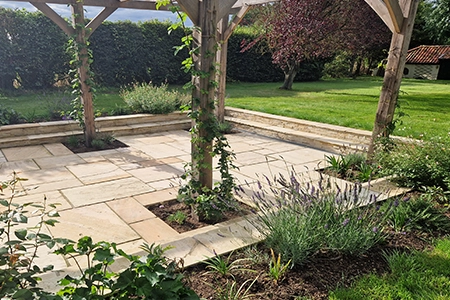
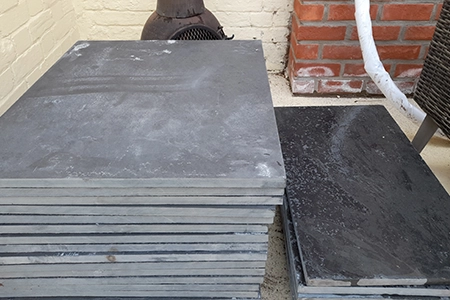
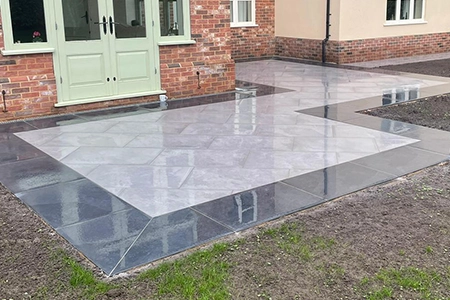
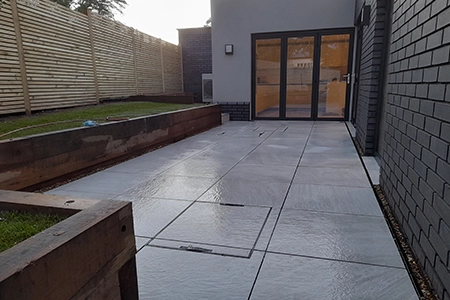
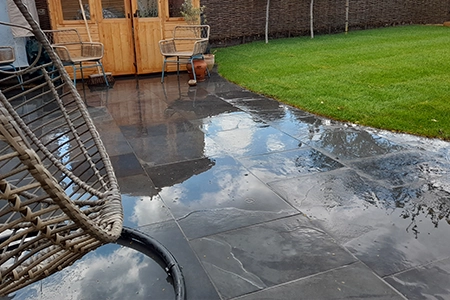
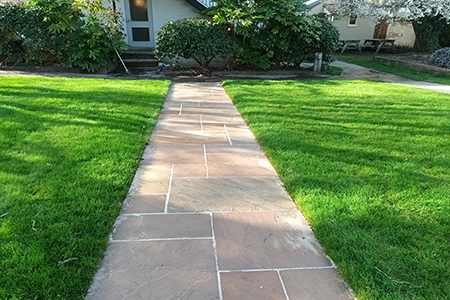

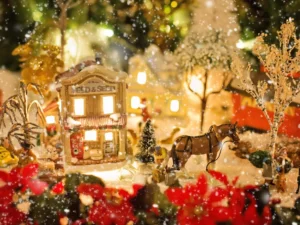


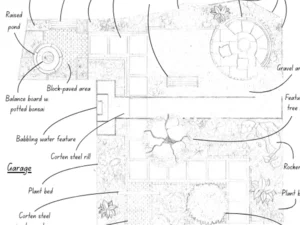
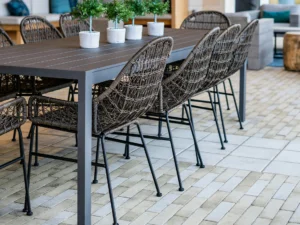

2 Responses
Your point of view caught my eye and was very interesting. Thanks. I have a question for you.
Hi there, happy to answer any questions you may have!